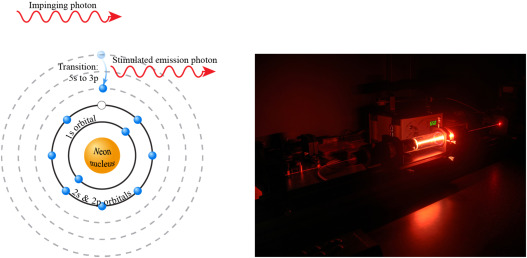
## Breakthrough in Photonic Time Crystals Paves the Way for Groundbreaking Advances in Optics
On November 12, 2024, an innovative paper released in *Nature Photonics* unveiled a groundbreaking optical material—**photonic time crystals**—that could revolutionize various industries by significantly enhancing light signal amplification. This discovery fosters excitement for improved technological applications, such as more accurate detection of diseases and pollutants, as well as progress in lasers and optical computing. Here’s what you should know about this state-of-the-art development.
### **Photonic Time Crystals: A New Horizon in Light Control**
Envision your smartphone’s camera identifying a single virus particle or cancerous molecule through the amplification of the minuscule light it emits. Until now, this idea has remained largely theoretical. However, an international team of researchers has made a significant leap, unveiling a new class of materials called **photonic time crystals**, which is on the brink of making these real-world applications feasible.
Conventional crystals achieve their distinct properties through repetitive spatial structures—similar to the arrangement of crystals in a geometric lattice. In contrast, photonic time crystals introduce a groundbreaking twist: **they replicate properties over time instead of merely in space**. This characteristic allows for unprecedented manipulation of light-matter interactions, enabling light to be amplified “on the fly” in ways currently unimaginable with existing technologies.
—
### **A Groundbreaking Command Over Light**
“This research has the potential to bring about the first experimental realization of photonic time crystals, pushing them into practical realms and possibly altering entire industries,” asserts Professor Viktar Asadchy from Aalto University, a leading figure in this study.
What differentiates photonic time crystals from existing light manipulation technologies is their temporal nature. Rather than adjusting the spatial configurations of atoms in a material, these crystals change their properties at high speeds, altering on a frequency scale trillions of times faster than conventional materials. This capability enables photonic time crystals to engage with light waves with extraordinary precision, capturing and drastically amplifying light signals.
Picture light traversing a material that alternates between characteristics of air and water—but at such astonishing speeds that the changes occur quadrillions of times each second. This time-dependent behavior results in light pausing and intensifying at various moments (known as a **momentum band gap**), providing a powerful mechanism for amplifying even the most subtle optical signals.
—
### **From Theoretical Concepts to Real-World Applications**
The remarkable potential of these crystals is particularly apparent in medical and environmental diagnostics. When identifying microscopic entities like viruses or cancer indicators, these entities emit a faint, specific light signal when energized. Current technologies face challenges in detecting such weak signals. However, photonic time crystals can address these challenges by amplifying the emitted light, facilitating quick detection with existing devices.
**How did the researchers accomplish this breakthrough?** They crafted a material using a collection of minuscule silicon spheres designed to establish resonant conditions that support light amplification. This method aligns with pre-existing optical technologies, bringing theoretical concepts closer to practical application.
“Picture us trying to identify a small particle, like a virus, contaminant, or a disease biomarker. Upon excitation, the particle would release a minuscule amount of light at a specific wavelength,” explains Asadchy. “A photonic time crystal can seize this light and enhance it automatically, allowing for more efficient detection with the technology we already have.”
This amplification tactic, paired with current optical methods, suggests that sensors for contaminants, viruses, and disease markers could become considerably more sensitive and quicker in the near future.
—
### **Wider Implications and Future Prospects**
Until recently, the majority of experiments with photonic time crystals were limited to **microwave frequencies**—akin to working with “slower,” long-wavelength light. Nonetheless, the latest research overcomes this constraint, advancing this technology into the **visible light spectrum**, which is crucial for real-world applications in sectors like **communications, medical imaging, and environmental sensing**.
With photonic time crystals now operable within the visible light range, limitless opportunities await industries dependent on precise light manipulation. These range from high-performance laser systems to optical computing frameworks that surpass current electronic speeds, as well as sensors capable of detecting minute traces of biological or chemical substances across various fields such as healthcare and environmental assessment.
As study co-author Mina Savchenko from Stanford University emphasizes, “The importance of this study lies in its ability to connect theoretical frameworks to practical use, providing a clear path to enhance numerous light-based technologies.”
—
### **Glossary of Key Terms**
To enhance understanding of the technology presented in this breakthrough, here are several essential terms:
– **Photonic Time Crystal**: A material characterized by optical properties that vary periodically over time, diverging from traditional crystals that form repeating spatial patterns.
– **Momentum Band Gap**: A phenomenon wherein light either halts or becomes temporarily “trapped” within a